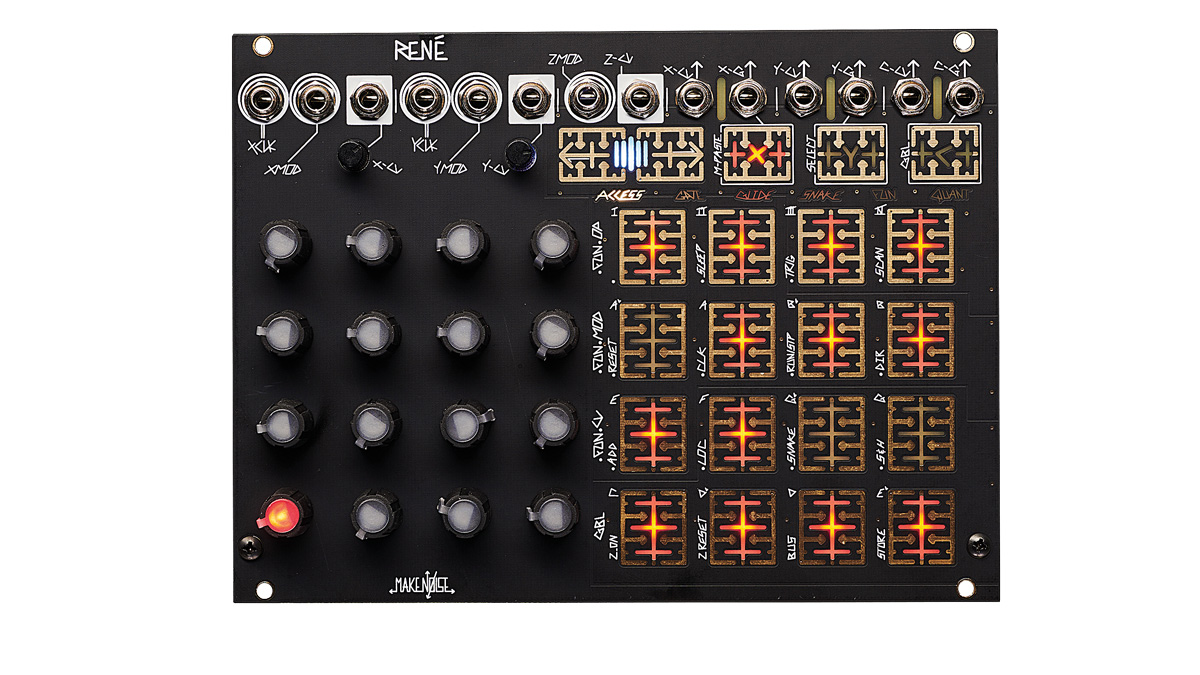MusicRadar Verdict
A tactile sequencing powerhouse that’s really fun to use. Lots of depth for live performance with no menu diving to slow you down.
Pros
- +
Three channels make it very quick to get a whole track working.
Cons
- -
No dedicated reset input.
MusicRadar's got your back
As Rene (the most popular Eurorack sequencer ever, according to Modular Grid) turns 10, Make Noise has revisited its flagship sequencer with a bold new version.
René was the first Cartesian sequencer offering 16 steps on a grid controlled by a clock input for each axis. This version demotes the Cartesian sequencing of the original to the third set of outputs: the first two sets only have one clock input each now, with 16 ‘Snake’ patterns that define the order of notes played.
While René can be very deep, you can get started making music with only a glance at the manual. A button is used to select one of the three channels while two arrow buttons take you through the different modes available. It’s useful that the mode stays the same when you switch channel so you can quickly alter the Gates for each channel, for example.
René does all the standard analogue sequencer stuff, key, octave, glide and individual pattern length. If you use one channel for modulation you can set it with no quantisation and maximum voltage range, handily.
It’s a shame there’s no global reset input: you can manually reset each channel but if you want to reset with a gate you have to use the mod CV input, meaning you can’t use it for anything else. The mod input can be used to control a few different options: pitch, location, start/stop, clock rate, etc. We used one channel to sequence another channel’s Snake mode, to quickly produce sequences much longer than 16 steps.
For us, Snake mode is what really sets René apart
For us, Snake mode is what really sets René apart: Make Noise have obviously paid attention to their users here, as this was the most popular method of controlling the original.
Now with 16 Snake patterns, it’s quick to get interesting rhythms happening - punch in a few gates and flick through till something makes you move. Gates have different colours for each channel but with three channels of CV, the knobs don’t match the pitches. If you trust your ears this isn’t an issue though.
Want all the hottest music and gear news, reviews, deals, features and more, direct to your inbox? Sign up here.
The touch plates are pretty responsive and it doesn’t have the dry feel the original suffered from. The response time is not super speedy but you get used to it.
René now also lets you save all your settings as one of 64 States. It’s easy to duplicate a state a few times, make changes to the copies and then either modulate or switch between them manually - a song mode of sorts and great for playing live. The powerful Mesh States option enables you to alter the parameters on a group of states simultaneously. Note, however, that René will not automatically save your current state when you power cycle!
René communicates on the select bus with TEMPI, enabling State save and recall to be synced between the two. It also sends clock info to a number of other modules with select bus functionality - pretty handy.
